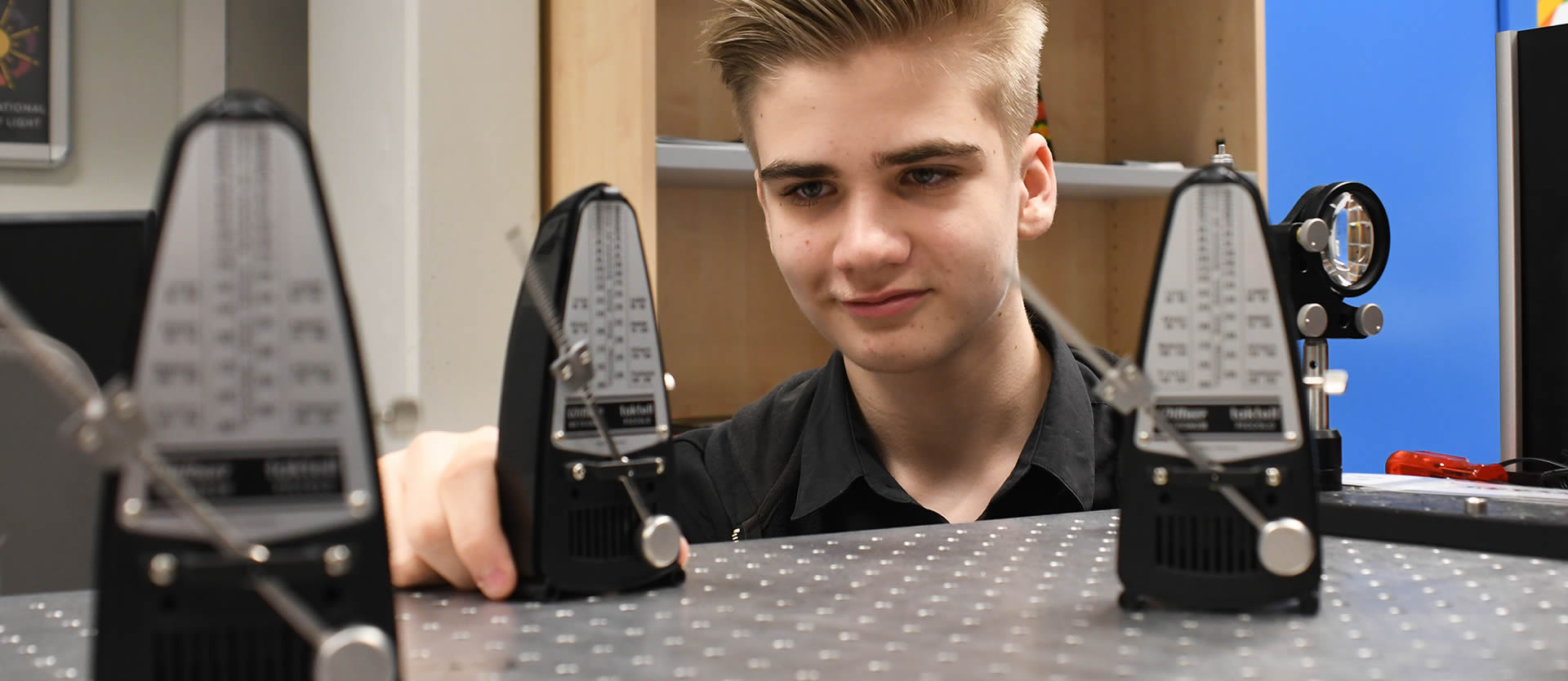As if by magic reconciled

Each musician who tries to keep stroke has already used a metronome. The pendulums cast a spell over me as well. However, it was less from a musical point of view but from the physical aspect. I tried to find out how at least three pendulums behave when sitting on a table and swinging around.
This problem was one of 17 issues from which one could choose as task at this year’s GYPT competition. I took notice of the competition during an internship I was undergoing at the student lab PhotonLab for Dr. Silke Stähler-Schöpf. As I was already dealing with pendulums before the metronome-issue was accommodating.
A metronome is a pendulum that is driven by a system. When fully hit out it generates a tone. This is to help musicians to keep the stroke. But, if several metronomes are located on a freely movable base the phenomenon occurs that the completely different moving metronomes reconcile. This is because each metronome influences the other with the help of the base and that way forces the other one to adapt to its own movements.
I was able to measure that synchronization by recording the experiment with the help of a microphone and a recording program. The program namely shows each sound that is coming in through the microphone as a deflection. For this purpose I used three metronomes. In doing so I was able to recognize three swings at the beginning. This means that the metronomes reached the point of oscillation on which a tone is generated, at totally different times.
Hence, one can conclude that the metronomes are not in phase. But, if another measurement is taken after some time, only one swing can be observed, which is directly indicative of the synchronization of the metronomes. This phenomenon can be observed while using any number of metronomes, it works with 60 metronomes as well, though the synchronization then needs more time.
Now I wanted to describe the whole process within a theoretical model. Unfortunately, it is almost impossible to calculate when a metronome is where located. Therefore, I developed a model approaching their movements. This way, after a lot of calculating, I was able to achieve results similar to those I examined during the experiment. Eventually, I tried to find out if a synchronization of three metronomes is also possible on a firm surface that is almost completely vibration-free. To this end, I installed the devices on an outright vibration-free laser table at the PhotonLab. After half an hour the metronomes where still in unison.
I’ve presented my results at the GYPT meeting at the Max Planck Institute of Quantum Optics and was invited to the next round to Bad Honnef. I would particularly like to thank Dr. Silke Stähler-Schöpf from the PhotonLab who enthused and supported me with the competition.










